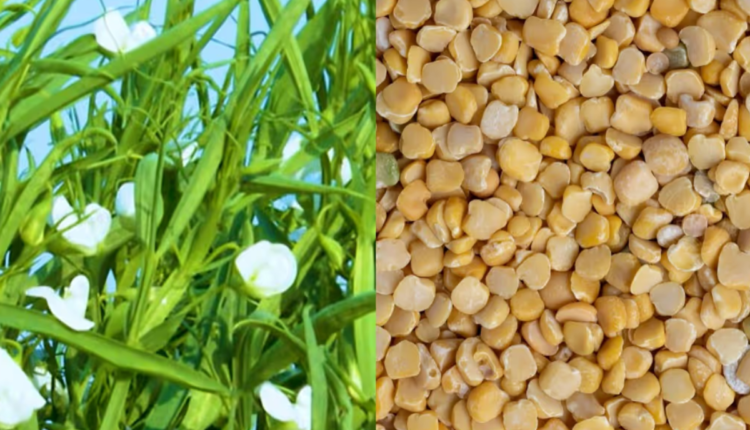Why is crop of khesari called farmer’s ‘Insurance crop’?
know about Benefits and ways of growing Khesari crop also known as Insurance crop
Many people are not aware of tevda (Khesari) dal, but it is consumed in rural areas. However, it is not as popular as it used to be, but farmers can also earn extra income by cultivating khesari as a fodder crop.
In many states of India that grow paddy, fallow land is left during the rabi season. Due to dependence on rainfall for irrigation, cultivable land remains barren during the rabi season. The relay method of cultivation helps solve this problem and khesari can be easily cultivated by this method.
What is the relay method?
This is a method of crop cultivation in which the second crop is sown before the first crop is harvested. The relay method is commonly used in paddy cultivation. The seeds of the relay crop are spread 15-20 days before the harvesting of the paddy crop, when the grains are about to ripen, i.e., between October and November. There should be sufficient moisture in the field at the time of sowing the seeds.
The moisture should be enough so that the seeds stick to the wet soil, but it is also important to keep in mind that there should not be too much water in the field, otherwise, the seeds might rot. If there is access water, it is mandatory to remove it.
Tevda, legume and fodder crop
Khesari, also known as Tivra, Lakhdi, Kasari, etc., is a legume crop. It is also a good fodder crop. Khesari dal is a good source of protein. In some countries, Khesari is grown for fodder only. This crop gives a good yield even in dry conditions. It is a drought, pest, and disease-resistant crop and gives good production in every condition. Due to this quality, it is also called an “insurance crop”. It also replenishes nitrogen in the soil and helps make it more fertile.
When to sow?
Under the relay method, Khesari is sown 2-3 weeks before the harvesting of paddy. This means that the seeds are spread between mid-October to mid-November. Sowing is done by broadcasting method, which spreads seeds by hand or machine over the entire field. 90 kg seeds are required per hectare and the temperature should be 15-25 degrees Celsius for good yield.
Irrigation and Weed Control
Khesari crop does not require much irrigation, as it can absorb moisture from the soil. Irrigation is usually done after 60-70 days of sowing, which helps to improve production. Weed control can be done by weeding once after 30-35 days of sowing. However, if the weeds are more, then 0.75 kg of 50% Basalin per hectare can be sprayed.
Cutting and Production
If Khesari is being cultivated for fodder, it should be harvested when 50 per cent of the flowers have bloomed. If it is being cultivated for seeds, the crop should be harvested by the end of March. The yield of fodder crops is 15-18 tons per hectare, while the yield of grains is 0.5-1.00 tons per hectare.
Benefits of Khesari Cultivation
1. Land that remains uncultivated after the harvest of paddy crops due to lack of irrigation can be used for Khesari cultivation. This will not cause any loss to farmers.
2. The cost of cultivation of Khesari is also low because it gives good yield even with less tillage and less moisture.
3. The Khesari fodder crop gets ready in a short time, which makes it effective in avoiding the damage caused by drought.
4. It makes the soil fertile by balancing nitrogen.
5. Khesari contains a good amount of protein and fibre and is an excellent fodder for animals, it provides them with complete nutrition.
Contact us – If farmers want to share any valuable information or experiences related to farming, they can connect with us via phone or whatsapp at 9599273766 or you can write to us at “[email protected]”. Through Kisan of India, we will convey your message to the people, because we believe that if the farmers are advanced then the country is happy.
You can connect with Kisan of India on Facebook, Twitter, and Whatsapp and Subscribe to our YouTube channel.



